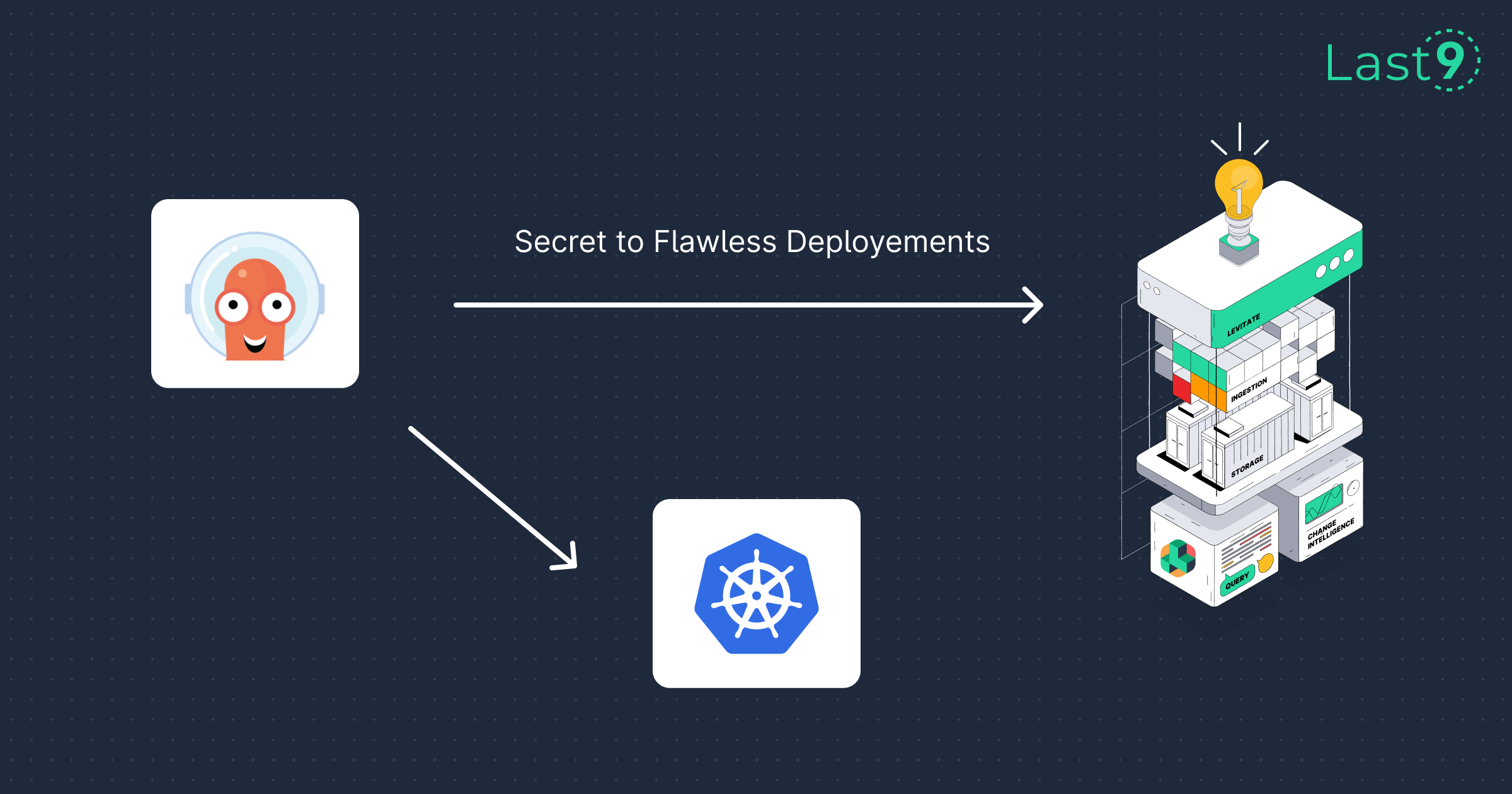Mar 7th, ‘23/6 min read
SLA vs SLO vs SLI - What's the difference
What's the difference between SLAs vs SLOs vs SLIs. Understanding these little nuances are critical for DevOps folks. Here's a simple reckoner on what each of these mean

The world is more competitive than ever, and customer satisfaction is the north star driving this competition. Businesses use various approaches to gain competitive advantages and meet customers' expectations. Implementing Service Level Agreements (SLA), Service Level Objectives (SLO), and Service Level Indicators (SLI) is one such approach. These concepts provide a framework for measuring and managing the performance of an organization's systems and services, thereby helping to improve operational efficiency and building customer loyalty and satisfaction.
Businesses rely on complex systems to support their operations, but ensuring that these systems meet users' needs is a challenge that SLAs, SLOs, and SLIs seek to address.
But before we go further, here's a one-liner on what each of these terms means in a simplified, easy-to-understand nugget:
What is an SLA?
An agreement between service providers and their customers outlining the service level to be delivered
What is an SLO?
A target is set towards achieving the level of service promised in the service level agreement.
What is an SLI?
A metric used to track the service performance and determine if the target set in the service level objective is met.
SLA, SLO, and SLI help businesses or their DevOps teams to align system performance with users’ needs.
In this article, we deep-dive into this triad and analyze what SLA, SLO, and SLI are, the difference between SLA, SLO, and SLI, the challenges businesses face when implementing them, and the best practices you can implement.
Let’s dive in.
What is a Service Level Agreement (SLA)?
SLA is an agreement between a service provider and a customer that spells out the level of service that will be provided and the consequences if the agreed-upon level of service is not met. The consequences could be in the form of credits or a money-back policy. An SLA defines metrics such as uptime, response, latency, and resolution times.
SLAs are legally binding and are used to establish the expectations and obligations of both parties. An SLA contains a statement of objectives, the scope of services, service provider responsibilities, customer responsibilities, performance metrics, exclusion clause, and penalties for contract breach.
What is a Service Level Objective (SLO)?
SLOs are specific goals and measurable targets that a service provider aspires to. SLOs are mostly more granular than SLAs and can be defined for specific service components. SLOs are guiding stars that help ensure that the service provider ratifies the pre-agreed level of service defined in the SLA.
To define the SLO, you must determine whether the target should be based on successful requests or time based on latency. For some services, timing is vital, while some services are interested in getting every request well-responded to, even if it takes longer than two seconds.
What is a Service Level Indicator (SLI)?
SLIs are metrics used to gauge performance. They are more technical than SLOs but are used to ratify that the stipulations of the SLO are realistic and measurable. Examples of SLIs include response time, error rate, latency, uptime, and throughput.
Monitoring SLIs enables service providers to identify areas of improvement to ratify the agreements in SLOs and SLAs. SLIs are measured in real-time using monitoring tools. The tools trigger alerts or notifications if performance falls below a certain threshold or the error budget is breached.
SLA vs SLO

Service Level Agreement (SLA) and Service Level Objective (SLO) serve different purposes. An SLA is a contract between a service provider and a user that defines the standard of service expected, including penalty clauses for non-compliance. It's a legally binding agreement with explicit promises. Conversely, an SLO is a part of an SLA, setting specific measurable characteristics like reliability, responsiveness, or system availability. It's an internal objective for service operations. In essence, while SLOs define the technical performance goals, SLAs provide the legal framework that encompasses these objectives.
Who uses SLAs, SLOs, and SLIs?
While it is famously believed that network service providers are the primary users of SLAs, SLOs, and SLIs, times have shifted. All IT industries and their engineering teams use them today, including data centers, cloud providers, Software as a Service (SaaS) providers, Internet Service Providers (ISPs), Managed IT Services, and Telecommunications Services.
Suppose a SaaS provider offers an SLA guaranteeing software performance with defined breach penalties. The SLO for such SaaS could be to maintain an average response time of fewer than 2 seconds, and the SLI to measure this could be the median response time for user requests. The SaaS provider will keep tabs on the SLI, keeping it in check and swinging into action whenever it exceeds the SLO.
For Data Centers, a data center might offer an SLA that guarantees a certain level of network uptime and defines the penalties if the service falls below that threshold. The SLO for this service might be to maintain 100% uptime, and the SLI to measure this might be the percentage of successful network connections. Such a data center will monitor this metric, and if the SLI falls below the SLO, an alert will be triggered, enabling the data center to rectify redundant network connections.
Creating, Implementing & Maintaining SLA, SLO, and SLI
Creating, implementing, and maintaining these service levels can be complex and challenging. For instance, a lawyer or team of attorneys may be required to develop a well-detailed, structured, and enforceable SLA. To correctly measure and maintain SLOs and SLIs, you need Site Reliability Engineers (SREs) and SRE teams. In any case, some challenges organizations face when creating, implementing, and maintaining service agreements are:
- Defining measurable metrics: Determining the appropriate thresholds requires keen observability, continuous effort, expertise, and knowledge about expected customer experience. Defining measurable metrics that accurately reflect the quality of service required can be challenging.
- Aligning SLAs, SLOs, and SLIs with business goals: Ensuring that the SLAs, SLOs, and SLIs align with the overall business goals and objectives is essential. This can be difficult to achieve, especially since multiple teams or departments are involved. For accurate alignment, Site Reliability Engineers (SREs) must understand the correct type of SLO suitable for a particular business or service, whether request-based or window-based.
- Balancing customer expectations with business capabilities and functionalities: Meeting customer expectations while maintaining the business's capabilities and functionalities is a delicate task—setting unrealistic expectations can lead to dissatisfaction, and being too conservative may limit growth and opportunities.
- Managing exceptions and escalations: Despite efforts, exceptions and escalations can still occur. You must have transparent processes for handling these situations, including escalation paths and resolution plans.
- Measuring and reporting: Measuring and reporting SLAs, SLOs, and SLIs is challenging, especially when dealing with complex systems and data or when the business has a suite of services. You need the right tools and resources, computing service availability, and SLA violations, which can be difficult.
SLA, SLO & SLI Best Practices
Follow these best practices when creating and implementing SLAs, SLO, and SLIs:
Define clear and measurable SLIs
The SLIs metrics of a payment gateway vendor will differ from that of a batch-processing system or a customer-facing system. Your SLI metrics should be specific, measurable, and relevant to your service. They should also align with your overall business goals. Some of the SLIs can also be converted into Key performance metrics(KPIs) from the customer experience perspective.
Set realistic targets and thresholds
The targets and thresholds should be realistic and achievable, balancing customer needs with business capabilities. Setting a 100% percentile might be unrealistic. Ensure that your SREs choose the right indicators and understand what to aggregate. You can also set internal SLOs which are not customer-facing but are tracked internally by IT teams.
Involve all stakeholders
All stakeholders, including customers, end users, internal teams, and third-party service providers, must be carried along during implementation. Communicating regularly ensures that all stakeholders understand the agreements' expectations, goals, and requirements. This will preserve their zeal to work with you toward realizing your SLIs.
Regularly review and update agreements
Creating SLAs, SLOs, and SLIs and Maintaining them requires ongoing effort and resources. Review and update the agreements regularly to ensure their continued relevance and effectiveness. For effective review, gathering feedback from stakeholders, external customers, and end users identifying areas for improvement, and updating the metrics and targets as necessary.
Monitor performance
Regularly monitoring performance against the defined metrics is critical to ensuring that your services ratify agreed-upon expectations. You may need to implement a monitoring system, incident response workflow, and incident management for tracking outages and service reliability.
Ensure compliance
Compliance with SLAs, SLOs, and SLIs is crucial for ensuring that the service ratifies agreed-upon expectations. Regular audits, reporting, and communication with stakeholders can help ensure compliance. Ensure all parties or teams understand their responsibilities and have the necessary resources to meet their obligations.
Last9: Turn Microservice Chaos into Clarity to Drive Health and Quality
DevOps teams need an intelligence-based reliability tool for end-to-end visibility into SLO targets and SLI metrics. Last9's reliability tools automate visibility into service health and quality of systems and applications.
The visibility Last9 provides aids in establishing and measuring SLOs holds you accountable and makes you re-consider your microservice reliability and management approaches in a cloud-native environment.
SLA, SLO, and SLI are critical to effective service management. But creating, implementing, and maintaining them pose challenges that SREs can mitigate by implementing best practices like ensuring that the SLA informs the development of the SLO and setting a compliance window within which the targets must be met. This will also help in determining metrics to include in the SLI. After SLI creation comes metrics monitoring; a reliability tool is best-fit for that task. Last9 offers one such reliability tool.
Read more about Last9 Levitate.
Contents
Newsletter
Stay updated on the latest from Last9.
Handcrafted Related Posts

Prometheus Alternatives
What are the alternatives to Prometheus? A guide to comparing different Prometheus Alternatives.
Last9

Troubleshooting Common Prometheus Pitfalls: Cardinality, Resource Utilization, and Storage Challenges
Common Prometheus pitfalls and ways to handle them
Last9

Real-Time Canary Deployment Tracking with Argo CD & Levitate Change Events
Use Levitate's powerful change events to track success of canary rollouts via ArgoCD
Preeti Dewani